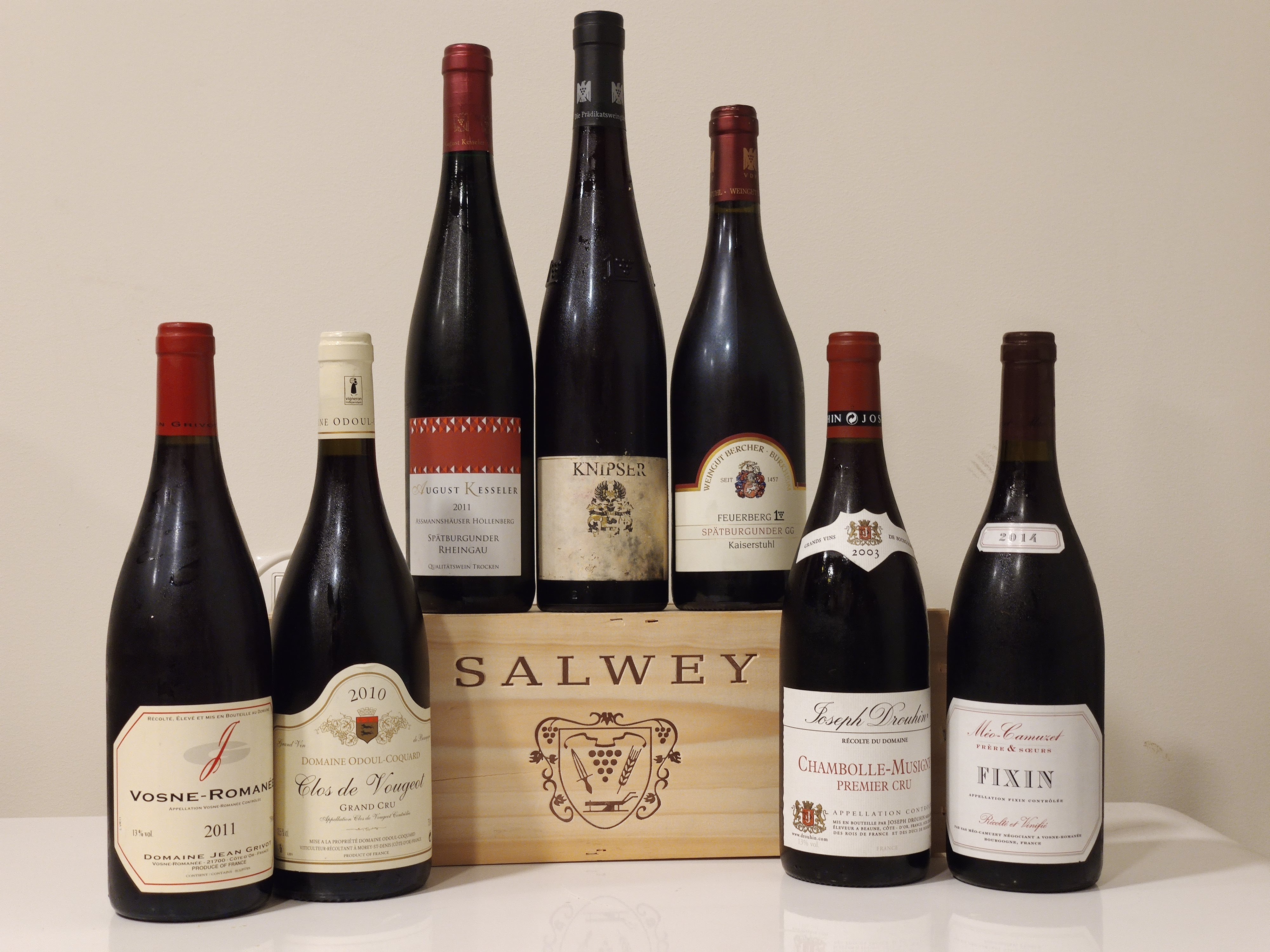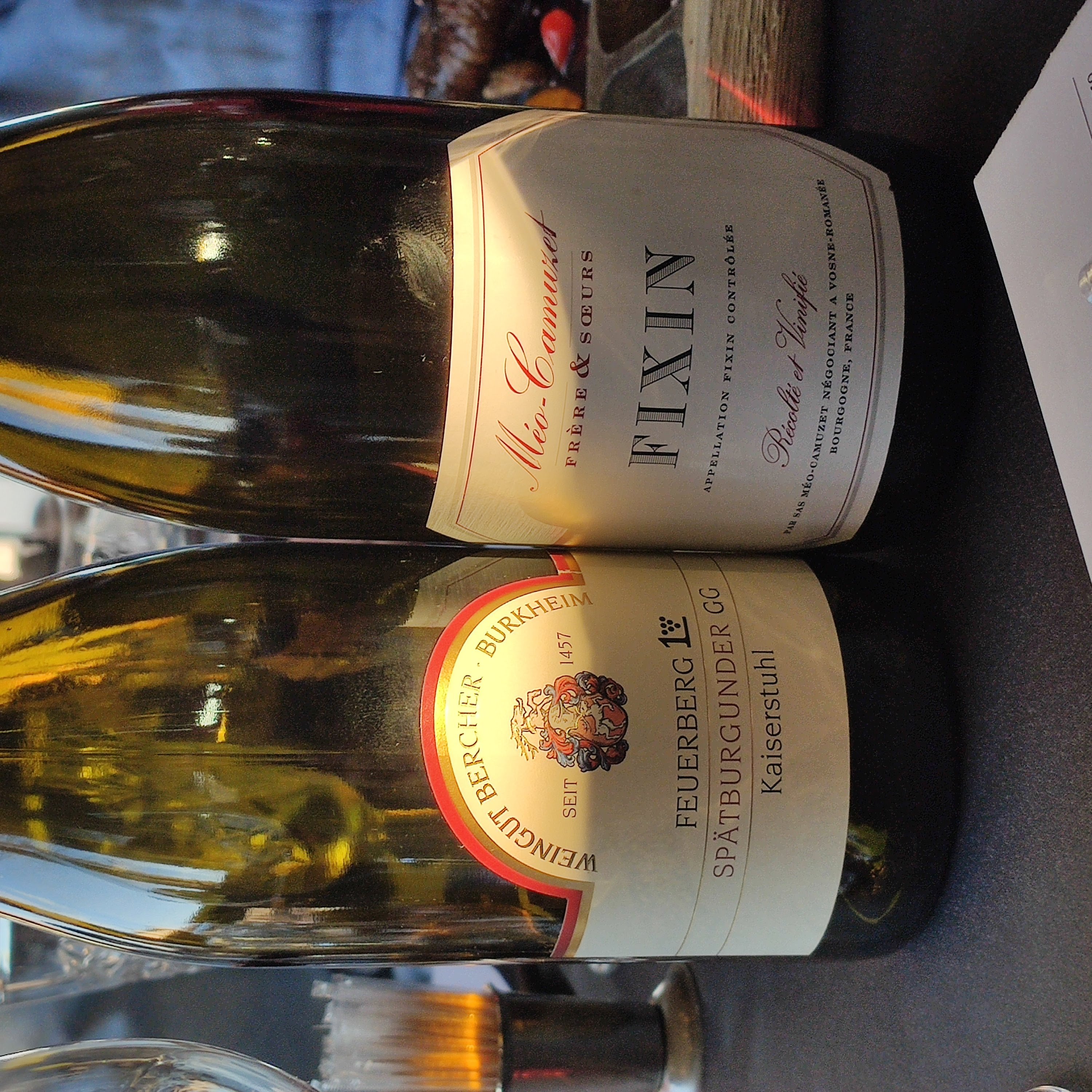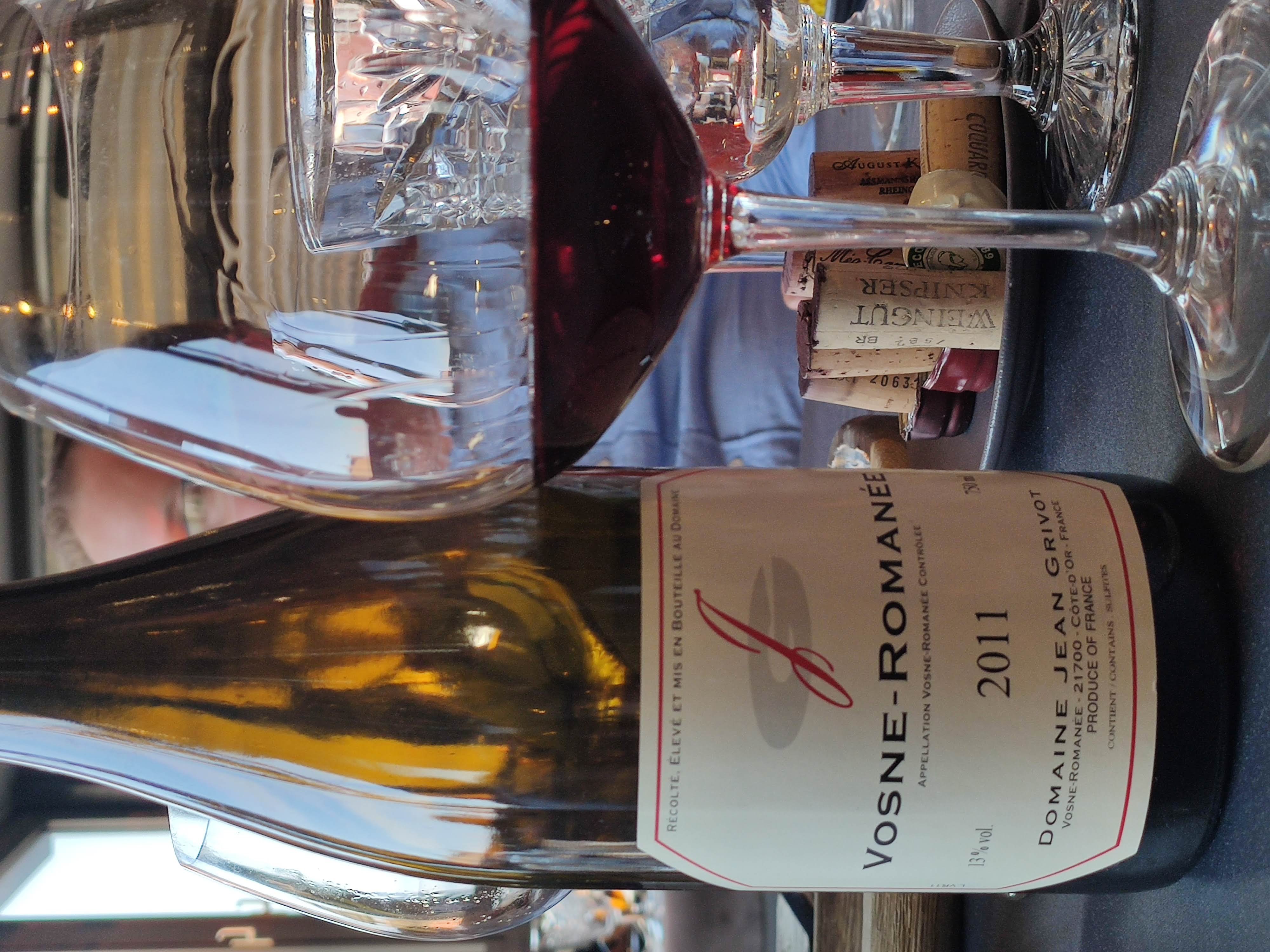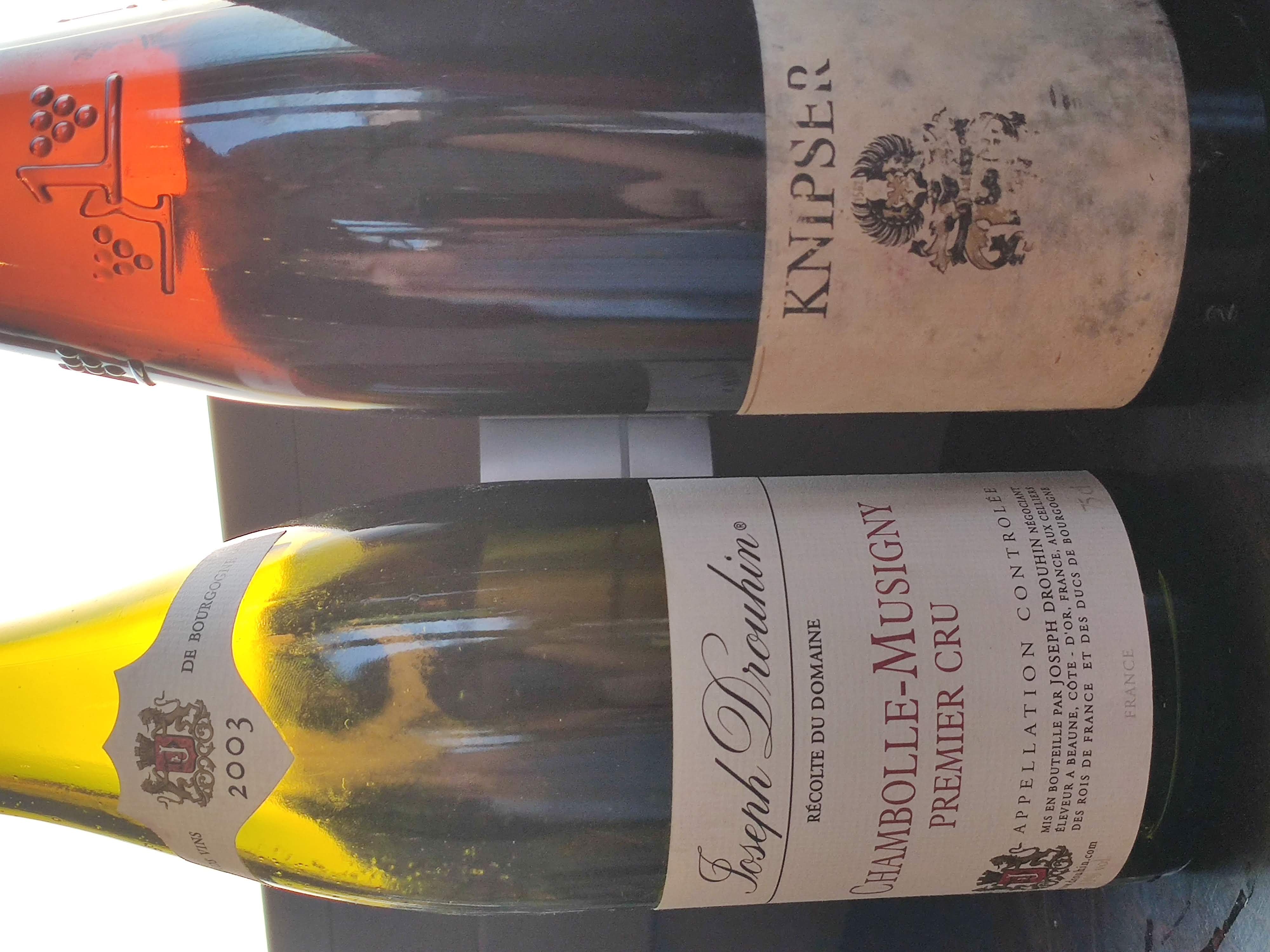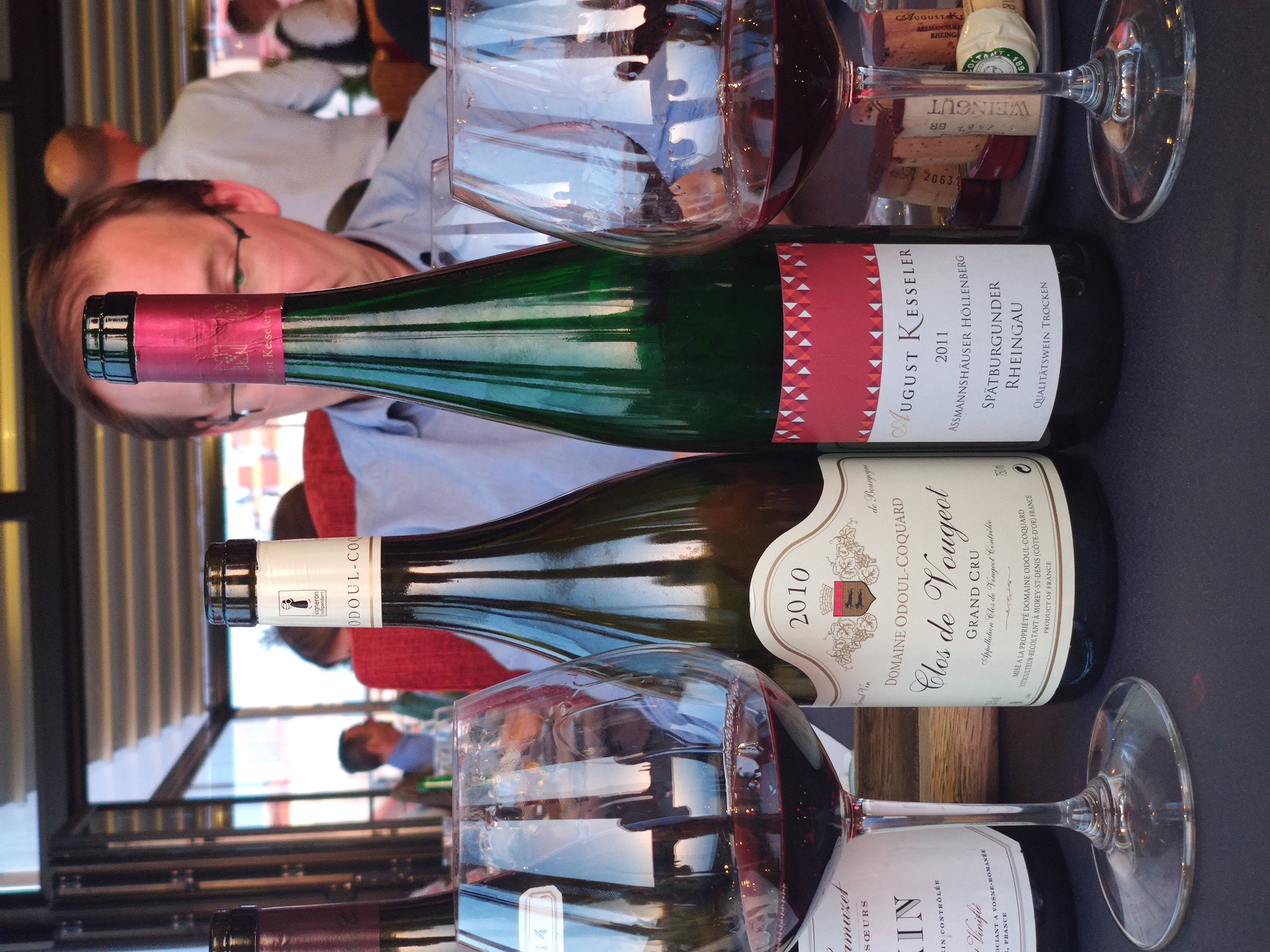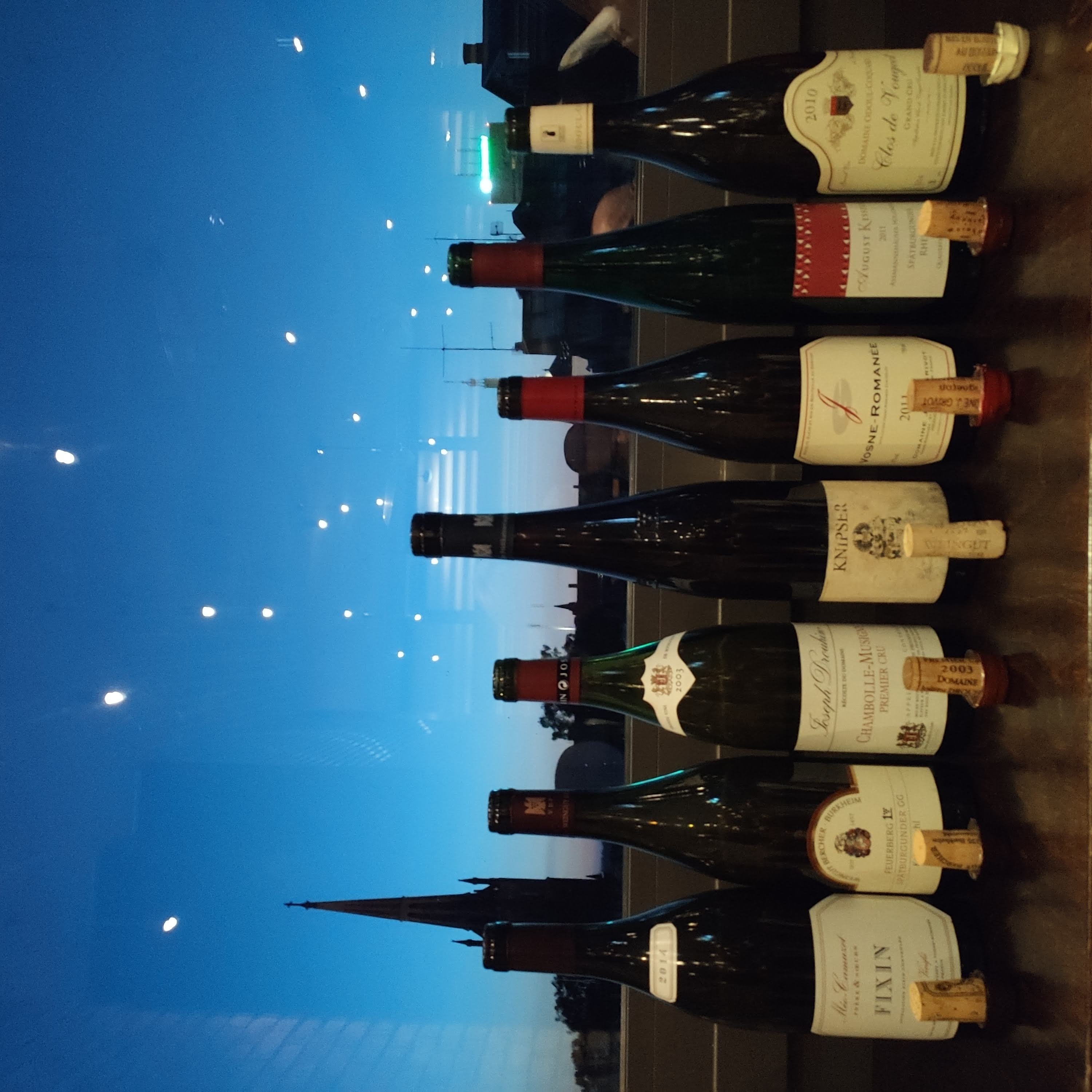German ![]() Spätburgunder vs Burgundy
Spätburgunder vs Burgundy ![]() Pinot Noir tasting. Both German and French wines were price matched to give it even more objectivity.
Pinot Noir tasting. Both German and French wines were price matched to give it even more objectivity.
That was so far the best and the most insightful tasting I did in 2019.
Here are my top observations:
![]() Späts are stylistically closer to each other even coming from different regions and vintages than Burgundy PN from the neighboring villages.
Späts are stylistically closer to each other even coming from different regions and vintages than Burgundy PN from the neighboring villages.
![]() Späts develop secondary and tertiary character faster than Burgundy yet not compromising the aging potential.
Späts develop secondary and tertiary character faster than Burgundy yet not compromising the aging potential.
![]() Yes, top Späts can be on par with fine Burgundy Grand Crus.
Yes, top Späts can be on par with fine Burgundy Grand Crus.
![]() 2010 Weingut Bercher - Burkheimer Feuerberg - Baden (
2010 Weingut Bercher - Burkheimer Feuerberg - Baden (![]() 90) Bitter. Showing some age. Silky, spices, barnyard. Perfumed. Fragrant. Jammy, ripeness. strawberry.
90) Bitter. Showing some age. Silky, spices, barnyard. Perfumed. Fragrant. Jammy, ripeness. strawberry.
Now classified as VDP.ERSTE LAGE (1er Cru). 230m above sea level. Volcanic subsoils.
![]() 2014 Méo-Camuzet Frère et Sœurs - Fixin (
2014 Méo-Camuzet Frère et Sœurs - Fixin (![]() 88) Juicy, berries, youthful, tannic. Simple. Lighter body.
88) Juicy, berries, youthful, tannic. Simple. Lighter body.
![]() 2001 Knipser - Im Großen Garten - Großes Gewächs - Pfalz (
2001 Knipser - Im Großen Garten - Großes Gewächs - Pfalz (![]() 92) Ripe, graceful, horse saddle, dried fruits. Good acidity. Strawberry, spices. Perfectly holding age. Very Burgundian.
92) Ripe, graceful, horse saddle, dried fruits. Good acidity. Strawberry, spices. Perfectly holding age. Very Burgundian.
Steep south slope, limestone. This filet parcel is situated in ancient, intact river valley.
![]() 2003 Joseph Drouhin - Chambolle-Musigny 1er Cru (
2003 Joseph Drouhin - Chambolle-Musigny 1er Cru (![]() 91+) Very young for its age. Even color only started getting warmer. It is Chambolle, but not 1er Cru. Berries, forest floor. Transparent.
91+) Very young for its age. Even color only started getting warmer. It is Chambolle, but not 1er Cru. Berries, forest floor. Transparent.
![]() 2011 Domaine Jean Grivot - Vosne-Romanée (
2011 Domaine Jean Grivot - Vosne-Romanée (![]() 90+) Natural, pure. Silky, effortless wine. Pine trees, wild strawberry.
90+) Natural, pure. Silky, effortless wine. Pine trees, wild strawberry.
![]() 2011 August Kesseler - Assmannshäuser Höllenberg - Rheingau (
2011 August Kesseler - Assmannshäuser Höllenberg - Rheingau (![]() 93) Fragrant. Mineral. Complex and powerful. Sweet ripe fruit. Top class.
93) Fragrant. Mineral. Complex and powerful. Sweet ripe fruit. Top class.
This world-renowned site for PN is among the steepest slopes in Rheingau (45-55°). S & SW facing vineyards on slate soils.
![]() 2010 Domaine Odoul-Coquard - Clos Vougeot Grand Cru (
2010 Domaine Odoul-Coquard - Clos Vougeot Grand Cru (![]() 93) Melon. Fragrant. Intense. Broad. Amazing aromas of dried bananas & sun dried tomatoes with touch of peppermint. Truly GC.
93) Melon. Fragrant. Intense. Broad. Amazing aromas of dried bananas & sun dried tomatoes with touch of peppermint. Truly GC.
